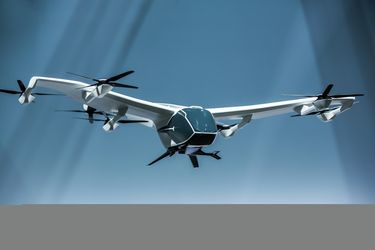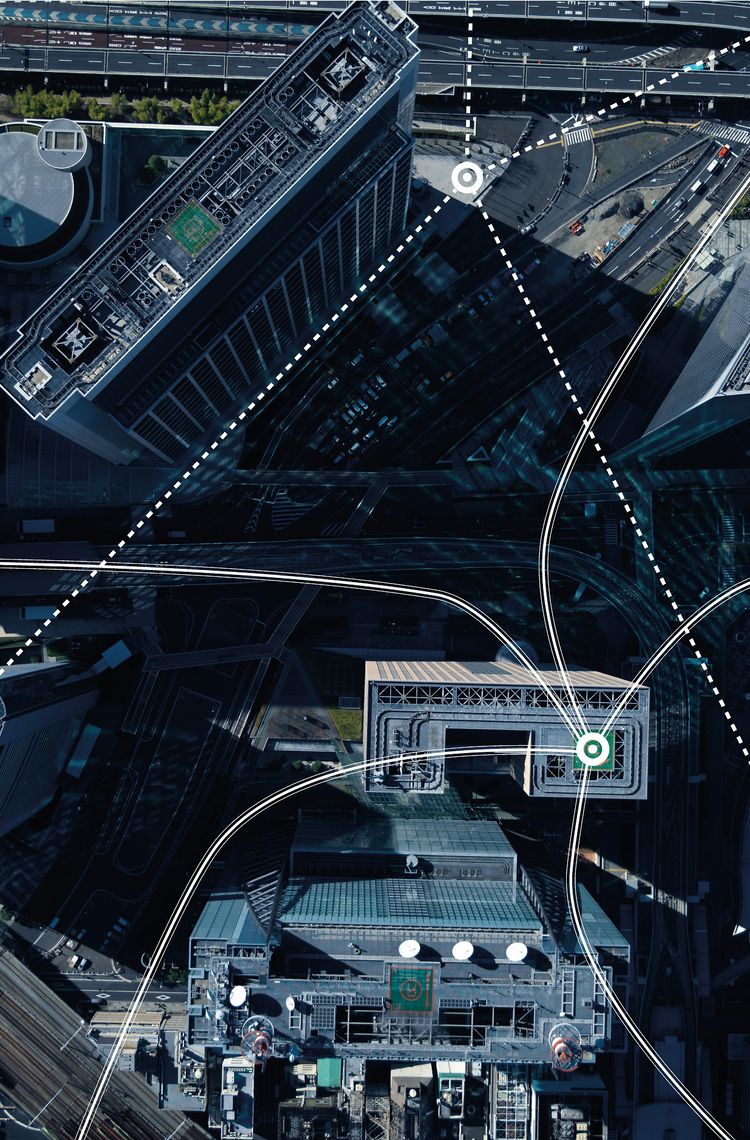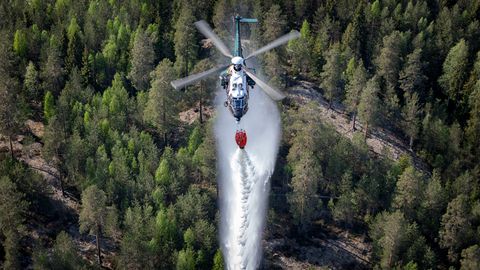Unmanned Traffic Management (UTM) is a completely new ecosystem that has to deal with unmanned vehicles. Air Traffic Management (ATM), our current system which relies on human controllers communicating with pilots, cannot handle the integration of these new aerial vehicles (passenger and cargo drones, air taxis, and other eVTOLs), which will fly together in low-altitude airspace and will be either fully autonomous or piloted remotely.
Airbus sees Advanced Air Mobility (AAM) as a complete ecosystem that includes not only a certified vehicle, but also the support and services needed to maintain the aircraft, UTM and ATM, flight operations, urban infrastructure, and customer engagement. All of these pillars must be in place for eVTOLs to become operational. Balkiz Sahrian, Head of Urban Air Mobility at Airbus, states: “The ultimate goal is to connect communities safely and to do so with a sustainable approach. While working at full speed on CityAirbus NextGen, we have taken into account the full complexity of the entire ecosystem. This means we need to consider the other pillars as enablers for the CityAirbus NextGen in operations. This also includes UTM as part of ATM”.
“We need to make sure that our vehicles can be integrated into the evolving unmanned traffic management (UTM) system,” states Miguel Ángel Vilaplana, Head of Airbus UTM. “This integration needs to be safe, effective, and automated to manage a growing number of vehicles that will be flying simultaneously in an airspace that is already busy.”

UTM as part of a holistic vision
Airbus started working on UTM in 2017, with the creation of the Company’s AAM vision. “When we launched the UAM strategy at Airbus, we did something pioneering and decided to look at the whole ecosystem in a holistic way: that is, to ask how these aircraft were going to be integrated into the airspace. How would these vehicles recharge? What would the business case be for all this?” recalls Miguel Ángel Vilaplana. “National states cannot define UTM on their own: They need the help of the aviation industry to provide these services. Pioneering this type of work was an opportunity to shape the future digital aviation ecosystem working together with regulators, air navigation authorities and industry partners.”

Applications at all levels
Even if the vehicles are unmanned, UTM has to perform similar functions to those traditionally carried out by today’s air traffic management system: issuing take-off clearances, approving flight plans, installing measures to keep vehicles safely away from each other and so on. However, the scope of ATM and UTM is fundamentally different.
“The perimeter of UTM starts in the very low levels of airspace, from zero ground level to 500 feet, mainly around cities, but there could also be applications of unmanned aircraft for agriculture, inspections in remote areas or medical equipment transport that can go beyond cities,” explains Vilaplana. “Nevertheless, we also see applications of UTM principles at very high altitudes, to deal with the digital integration of stratospheric drones. In addition to our activities with the UAM team, we are currently working with Airbus Defence and Space on the Zephyr programme in this direction. You can see UTM evolving like a “sandwich”, focusing on the lowest and highest levels, integrating with ATM in the middle and gradually contributing to a future integrated ecosystem. Our common vision is to have a safe and fully integrated airspace.”
In order to have a complete vision of the needs of all air traffic, the UTM and ATM teams at Airbus work closely together and collaborate with all the divisions. “We obviously work hand-in-hand with the Helicopters division to carry out our eVTOL project, but we also work with the Defence and Space division in its ambition to build civilian drone applications, as well as with Commercial Aircraft, to make sure we contribute to protecting and transforming today’s ATM. We don’t want to negatively impact the capacity and we need to keep our commercial aircraft flying as safely and efficiently as they do now,” explains Miguel Ángel Vilaplana.
It is expected that initial AAM operations will be piloted and make extensive use of the corridors as identified by EASA and FAA; in this environment Airbus believes that selected UTM services will already enhance the safety of manned AAM operations in uncontrolled airspace. Moreover, Airbus should use the opportunity that AAM development provides to advocate for an extended use of such services by other stakeholders (e.g. AMS). This would also pave the way for the evolution towards a digital integrated airspace, by starting to use UTM services to improve the safety of selected manned aviation operations, which today have limited situational awareness (mostly VFR flights in uncontrolled airspace).
Going forward, AAM is expected to evolve towards more autonomous operations with traffic management functions enabled by digital UTM services.

Today’s services for tomorrow’s flying aircraft
Today, Airbus is already providing basic operational UTM services in the US to automatically provide authorisations to drone operators under the Federal Aviation Administration’s Low Altitude Authorization and Notification Capability (LAANC) programme. This expertise will be transferred and utilised in the development of CityAirbus NextGen and will serve as a blueprint for Airbus´ ATM operations.
The aim of this programme is to safely integrate small drones into national airspace, and is designed to provide services both to private pilots wishing to fly their aircraft and to companies wanting to optimise their unmanned aerial system operations. On the European side, the European Commission recently adopted the U-space regulation, the first-ever regulatory framework for UTM operations. This regulation took effect in January 2023 and is expected to foster the growth of civilian drone operations in Europe through new digital and automated services such as flight authorisations, strategic deconfliction and contingency management support, while assuring an appropriate interface with manned aviation and air traffic control. The U-space regulation is expected to evolve over the coming years to enable large-scale eVTOL operations in the next decade.
“The current U-space regulations need to be understood as a first step for the integration of eVTOLs into the airspace management. As airspace is global, it will be crucial to harmonise the FAA and EASA regulatory standards for flight operations ranging from vehicle certification to UTM and AAM regulations,” explains Balkiz Sarihan.
*An earlier version of this article was published in issue 126 of ROTOR Magazine.






